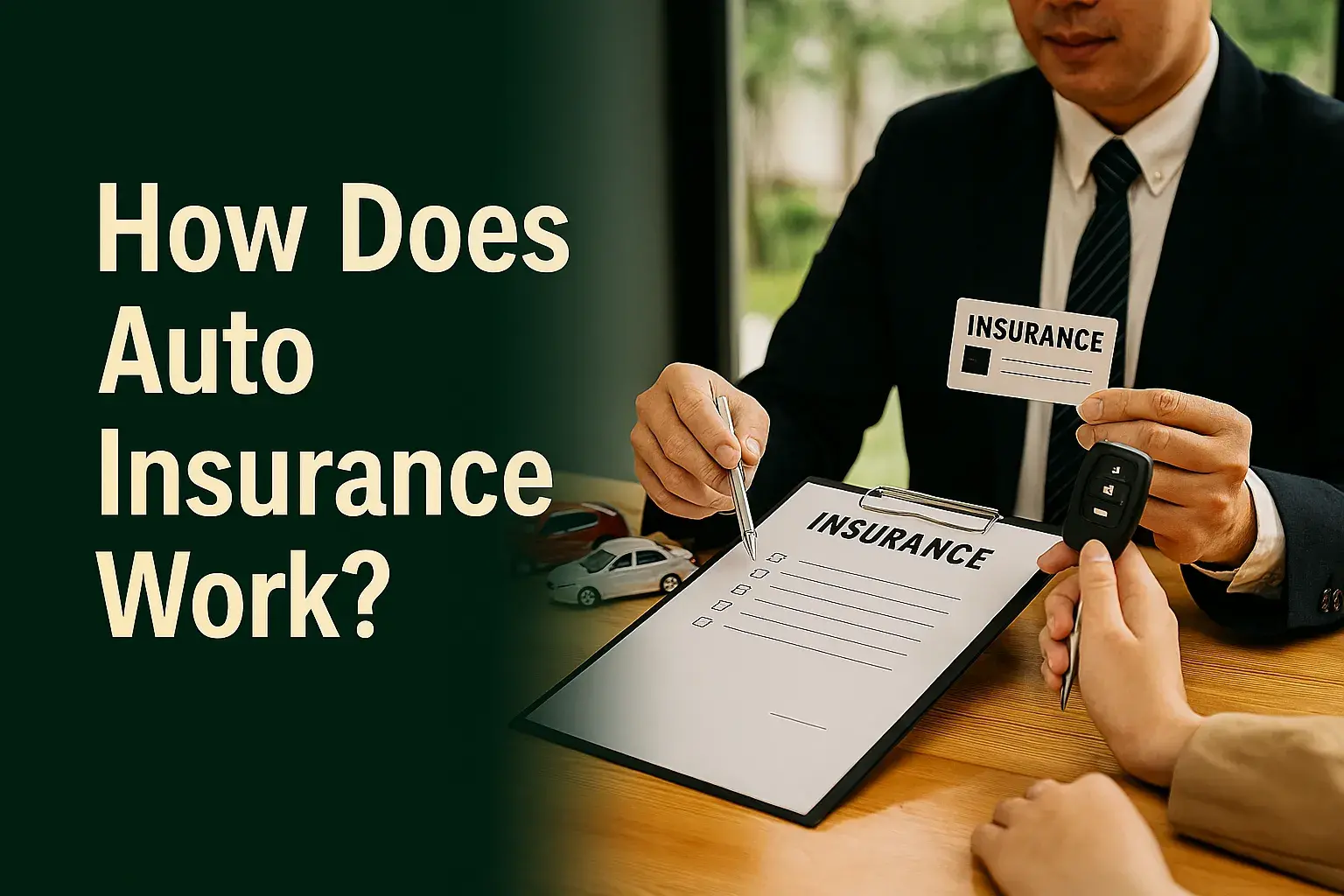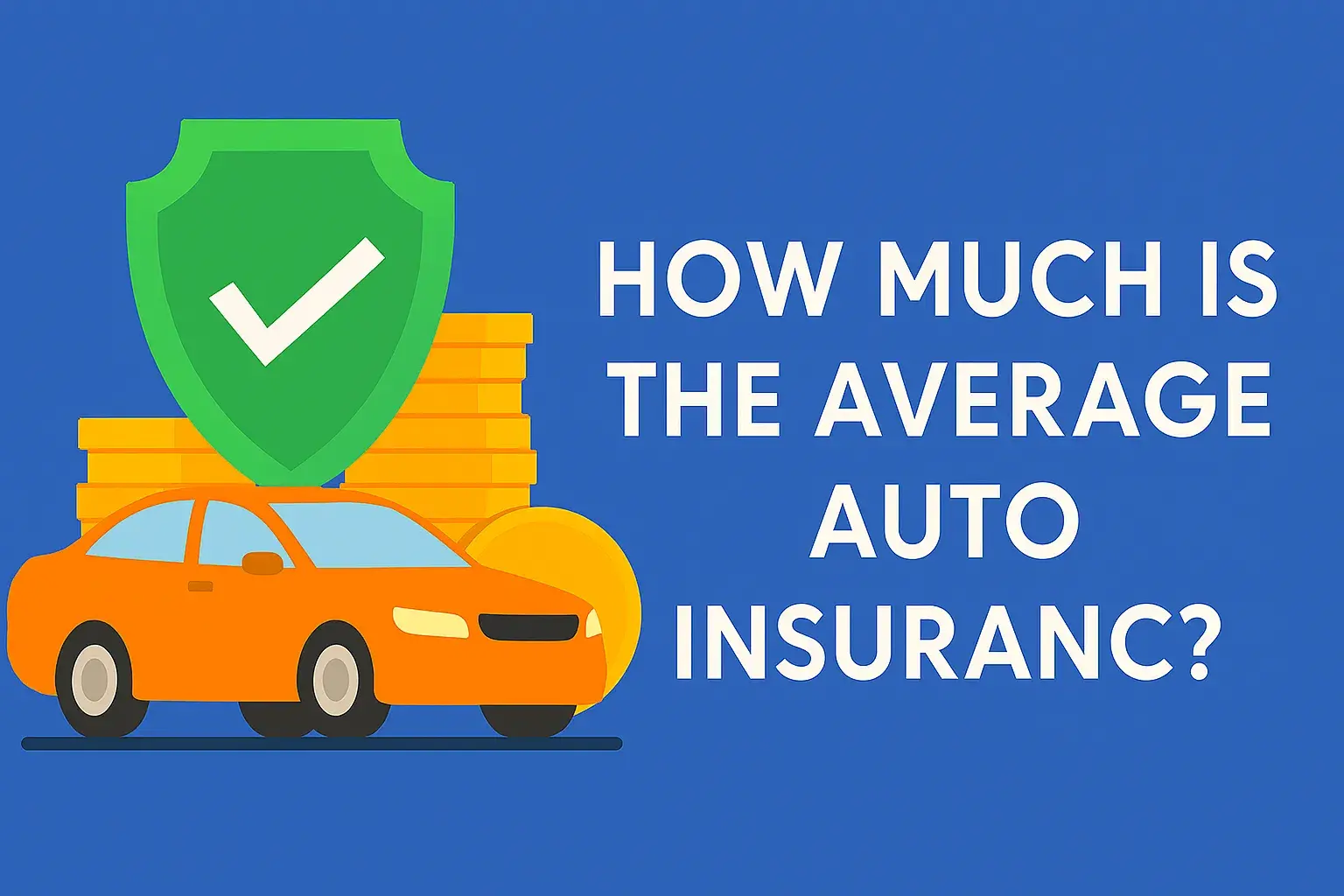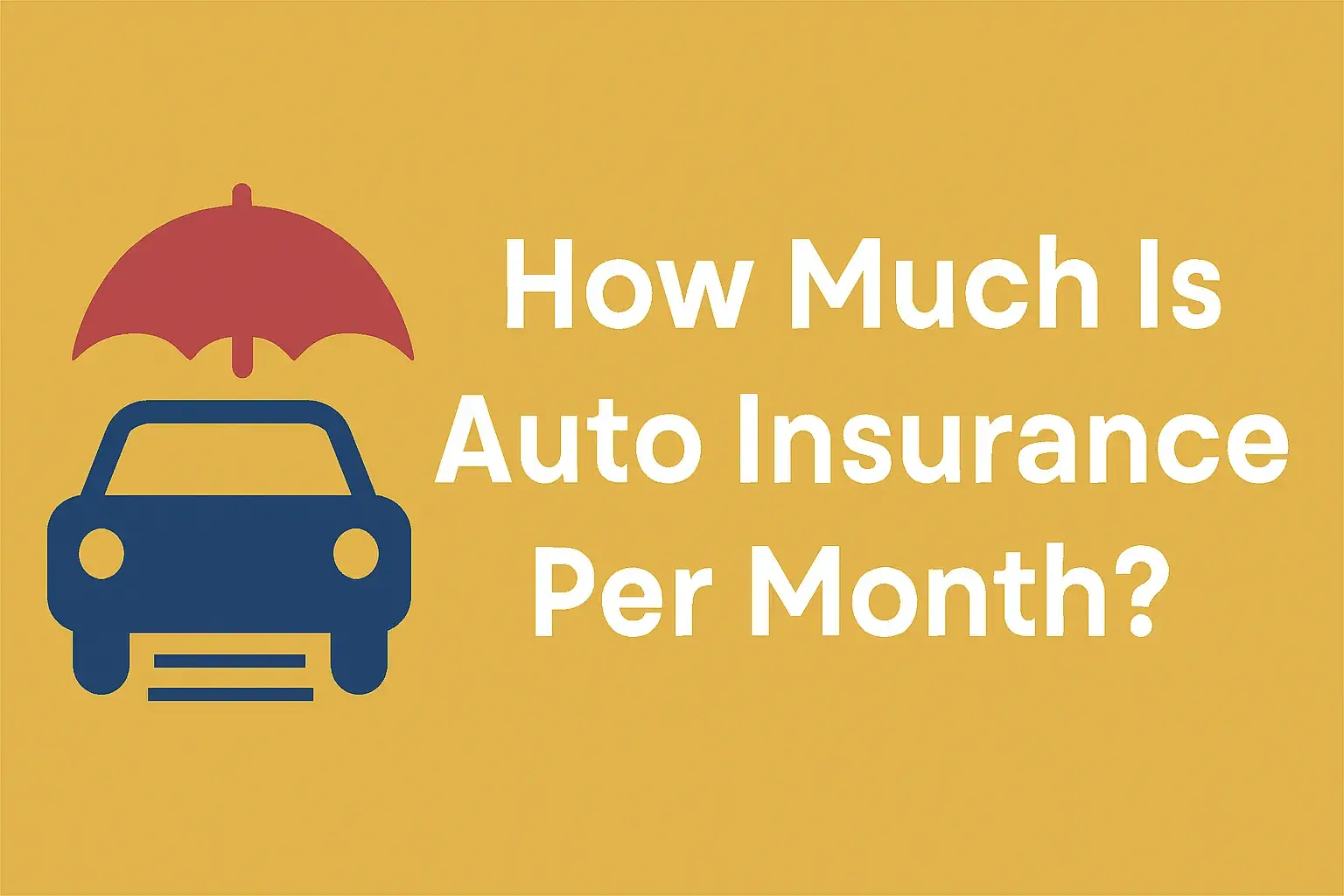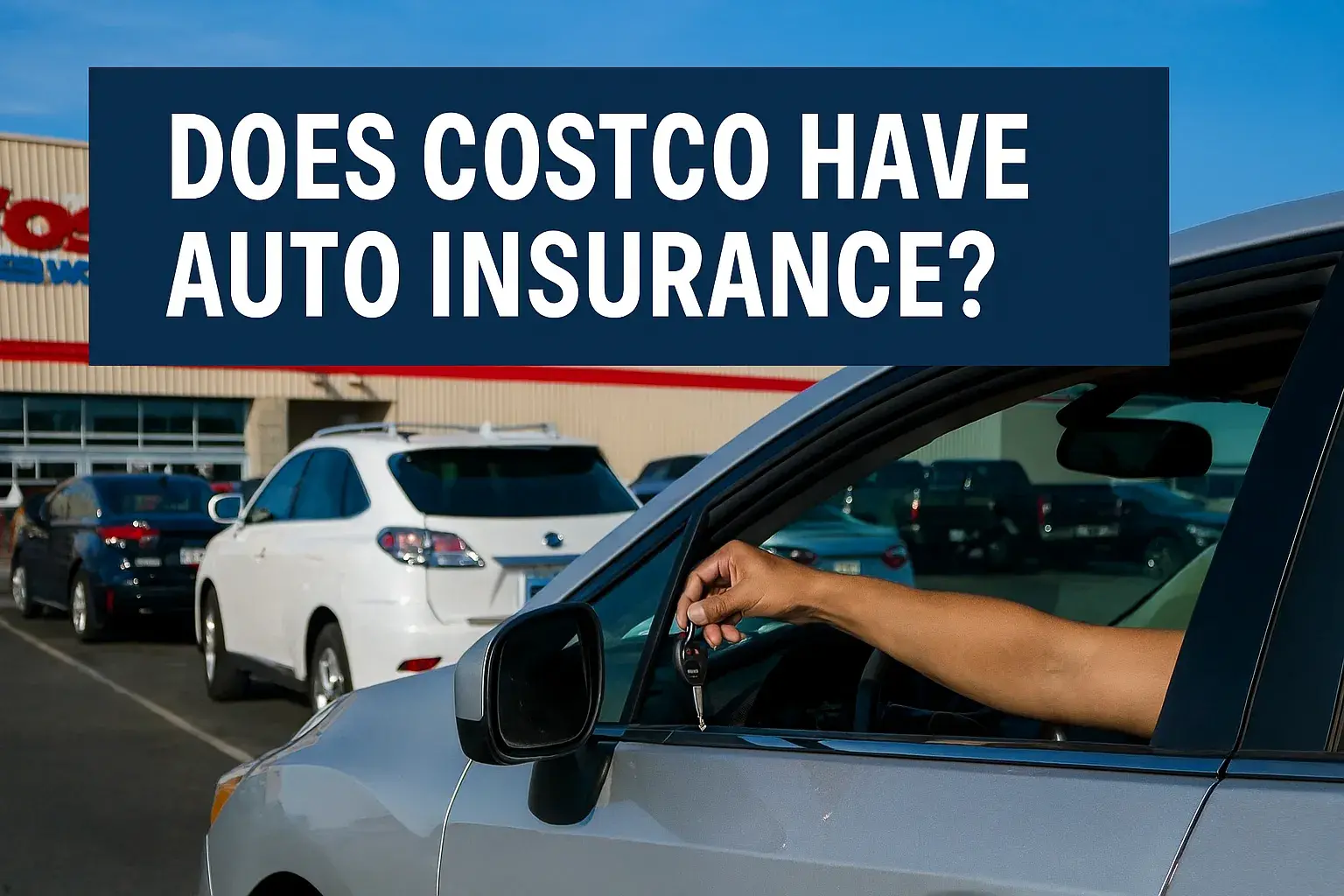11
Sep

Navigating the world of auto insurance can feel like deciphering a complex code. You know you need it, but the jargon premiums, deductibles, liability, and comprehensive can be overwhelming. If you've ever asked, "How does auto insurance actually work?" you're not alone. Millions of drivers sign on the dotted line each year without a full understanding of the financial protection they're purchasing.
At its core, auto insurance is a promise. It's a contract between you and an insurance company. You agree to pay a periodic fee, known as a premium. In exchange, the company agrees to pay for specific car-related financial losses you might incur during the term of the policy. This system is designed not just to protect you, but all drivers on the road, creating a shared pool of funds to cover unexpected accidents and injuries.
Most states legally require drivers to carry at least a minimum amount of auto insurance. This mandate exists to ensure that if you cause an accident, you have the financial means to cover the damage and medical bills for others. Driving without it can result in severe penalties, including fines, license suspension, and even jail time. Beyond the legal requirement, it is a critical tool for safeguarding your finances and your future. This guide will demystify the entire process, from choosing coverage to filing a claim.
What is Auto Insurance?
Auto insurance is a risk management product. It transfers the financial risk of owning and operating a vehicle from you to an insurance company. When you buy a policy, you are essentially paying a relatively small, predictable amount (your premium) to avoid the potential of a devastating, unpredictable large expense (like a $50,000 hospital bill or a $30,000 lawsuit).
Its primary purpose is financial protection. A serious accident can have crippling financial consequences. Without insurance, you would be personally responsible for all costs. This includes vehicle repairs, medical expenses for yourself and others, legal fees if you are sued, and more. Auto insurance acts as a shield, absorbing these costs up to the limits you select in your policy.
The importance of this coverage cannot be overstated. It protects your assets, such as your savings, your home, and your future earnings, from being seized to pay for damages you cause. It also provides a mechanism for getting your life back on track quickly after an accident, ensuring you can get your car repaired and receive necessary medical care without facing financial ruin.
How Auto Insurance Works – A Step-by-Step Breakdown
The auto insurance process is a cycle. Understanding each step is key to being an informed policyholder.
1. Choose Your Coverage Type and Limits
You work with an insurance agent or use an online platform to select the types of coverage you want (e.g., liability, collision, comprehensive) and the maximum amounts the insurer will pay for each (your policy limits). This determines the scope of your protection and the cost of your premium.
2. Pay Your Premium
To activate and maintain your policy, you pay a premium. This is typically paid monthly, every six months, or annually. Your payment keeps the policy in force. If you stop paying, your coverage will lapse, and you will be driving uninsured.
3. Drive with Active Coverage
As long as your policy is active and premiums are paid, you are covered. You drive with the peace of mind that your insurer will help cover costs if an incident covered by your policy occurs.
4. File a Claim When an Incident Occurs
If you are in an accident or your car is damaged (e.g., by hail or a break-in), you file a claim with your insurance company. This is a formal request for them to pay for a covered loss. This is usually done online, via a mobile app, or over the phone.
5. The Insurance Company Evaluates the Claim
An insurance adjuster is assigned to your case. They investigate the incident, review police reports, assess the damage, and determine who was at fault. They verify that the event is covered under your specific policy terms.
6. You Pay Your Deductible
If the claim is approved, you are responsible for paying your deductible—the out-of-pocket amount you chose when you bought the policy. For example, if you have a $500 deductible and repairs cost $5,000, you pay $500, and the insurer pays the remaining $4,500.
7. The Company Issues a Settlement
After the deductible is paid, the insurance company fulfills its obligation by issuing payment. They may pay you, a repair shop, a hospital, or another driver directly, depending on the nature of the claim and who was at fault.
Key Components of Auto Insurance
Every auto insurance policy is built on four fundamental components. Understanding these is crucial.
-
Premium: This is the price you pay for your insurance policy. It can be paid in installments. Your premium is calculated based on your risk profile.
-
Deductible: This is the amount you agree to pay out-of-pocket before your insurance coverage kicks in on a claim. Choosing a higher deductible usually lowers your premium, and vice versa.
-
Policy Limits: This is the maximum amount your insurance company will pay for a covered loss. You select these limits when you buy your policy. For example, you might have a liability limit of $100,000 per person and $300,000 per accident for bodily injury.
-
Coverage Period: This is the length of time your policy is active, typically six months or one year. At the end of this term, the policy must be renewed.
Types of Auto Insurance Coverage Explained
A standard auto policy is a package of several different types of coverage. You can customize it based on your needs and budget.
Liability Insurance
This is the most basic and legally required coverage. It pays for injuries and property damage you cause to others in an accident where you are at fault. It does not cover your own injuries or vehicle damage.
-
Bodily Injury Liability (BIL): Covers medical expenses, lost wages, and pain and suffering for other people injured in an accident you caused.
-
Property Damage Liability (PDL): Covers the cost of repairing or replacing another person's property you damage (e.g., their car, fence, or building).
Collision Coverage
This optional coverage pays to repair or replace your own car after an accident, regardless of who is at fault. It applies if you collide with another car, a tree, a guardrail, or any other object. It is typically required if you lease or finance your vehicle.
Comprehensive Coverage
This optional coverage pays for damage to your car caused by events other than a collision. Think of it as "everything else" coverage. It includes:
-
Theft of your vehicle
-
Vandalism
-
Fire
-
Natural disasters (e.g., hurricanes, tornadoes)
-
Falling objects (e.g., tree branches)
-
Animal collisions (e.g., hitting a deer)
-
Glass damage (e.g., a cracked windshield)
Like a collision, it's often required by lenders.
Personal Injury Protection (PIP)
Also known as "no-fault" insurance, PIP covers medical expenses for you and your passengers, regardless of who caused the accident. It can also cover lost wages and essential services (like childcare) you can't perform while injured. It is required in certain "no-fault" states.
Uninsured/Underinsured Motorist Coverage (UM/UIM)
This protects you if you're in an accident caused by someone who doesn't have insurance (uninsured) or doesn't have enough insurance to cover your costs (underinsured).
-
UM: Covers your medical bills and sometimes vehicle damage if the at-fault driver has no insurance.
-
UIM: Covers the gap between the at-fault driver's low policy limits and your actual costs.
Medical Payments Coverage (MedPay)
Similar to PIP but more limited, MedPay helps pay for medical expenses for you and your passengers after an accident, regardless of fault. It does not cover lost wages or other services.
Gap Insurance
If your car is totaled or stolen, your standard insurance will only pay its current actual cash value (ACV). If you owe more on your auto loan or lease than the car is worth, gap insurance will cover that "gap." It's highly recommended for new cars that depreciate quickly.
How Do Auto Insurance Premiums Work?
Your premium isn't a random number. Insurers use complex algorithms to assess risk and determine how likely you are to file a claim. Key factors include:
-
Driving Record: A clean record with no accidents or tickets earns the lowest rates. Violations and at-fault accidents significantly increase premiums.
-
Age & Experience: Statistically, young, inexperienced drivers (especially teens) are involved in more accidents, so their premiums are higher. Rates typically decrease after age 25.
-
Location: Drivers in densely populated urban areas with higher rates of accidents, theft, and vandalism pay more than those in rural areas.
-
Vehicle Type: The cost to repair or replace your car, its safety record, and its likelihood of being stolen all affect your premium. A sports car will cost more to insure than a family minivan.
-
Credit History: In most states, insurers use credit-based insurance scores. Statistics show that individuals with better credit files file fewer claims.
-
Coverage Choices: The types of coverage you choose (liability-only vs. full coverage), your deductible amount, and your policy limits all directly impact your cost.
How to Lower Your Premium: Discounts
Insurers offer numerous discounts. Always ask about:
-
Multi-policy (bundling home and auto)
-
Multi-car
-
Safe driver
-
Good student
-
Paid-in-full
-
Anti-theft devices
-
Paperless billing and autopay
Example Premium Calculation
Consider two drivers:
-
Driver A: 40 years old, clean record, drives a 2022 Honda CR-V, has a $1,000 deductible, and good credit. They might pay $1,200 annually for full coverage.
-
Driver B: 19 years old, one speeding ticket, drives a 2023 Ford Mustang, has a $250 deductible, and has average credit. They might pay $3,500+ annually for the same coverage.
How Auto Insurance Claims Work
Filing a claim is the moment your policy goes to work. The process generally follows these steps:
-
Report the Accident: Ensure everyone is safe. Call the police if necessary. Exchange information with the other driver. Contact your insurance company to start the claim process as soon as possible.
-
Documentation & Investigation: An adjuster will contact you. You'll provide details, photos of the damage, a police report number, and any witness information. The adjuster will investigate to determine fault and assess the damage, often by inspecting your vehicle or reviewing repair estimates.
-
Claim Approval/Rejection: The insurer will review the facts against your policy's terms. If the event is covered and you were in compliance with the policy, it will be approved. It could be denied if you were violating the policy (e.g., driving for a ride-share service without proper endorsement) or if the damage is excluded.
-
Settlement Process: For a repair claim, you may get a check directly, or the insurer may pay the repair shop you choose. For a total loss, the insurer will pay you the actual cash value of your car minus your deductible. For a liability claim, the company will pay the other party on your behalf, up to your policy limits.
Deductibles in Auto Insurance – What You Need to Know
Your deductible is your share of the financial responsibility in a claim.
-
What is it? A specific dollar amount you must pay before your insurance company pays its share. It applies per claim to comprehensive and collision coverage, not liability.
-
High vs. Low Deductibles: Choosing a high deductible (e.g., $1,000) means you pay more out-of-pocket if you have a claim, but your premium will be lower. A low deductible (e.g., $250) means less out-of-pocket cost later but a higher premium now.
-
The Premium Trade-off: This is a personal financial decision. If you have a healthy emergency fund and want to save on monthly costs, a higher deductible might be right. If you prefer predictability and want to minimize unexpected costs after an accident, a lower deductible could be better.
Liability vs. Full Coverage Auto Insurance
This is the most common coverage decision drivers face.
| Feature | Liability Insurance | Full Coverage Insurance |
|---|---|---|
| What it is | State-mandated minimum coverage. | A common term for Liability + Collision + Comprehensive. |
| What it covers | Damage & injuries you cause to others. | Damage to others + damage to your own car (from accidents and other events). |
| Cost | Less expensive. | More expensive (often 2-3x the cost of liability-only). |
| Best for | Older, low-value cars that are paid off. Drivers on a tight budget. | Leased or financed cars. Newer, valuable cars. Anyone who couldn't afford to replace their car out of pocket. |
-
When Liability-Only Makes Sense: If your car is old and has a low market value, the cost of full coverage might exceed the potential payout if the car is totaled. For example, if your car is worth $2,000 and full coverage costs $800 a year, it may not be cost-effective.
-
When Full Coverage is Better: If your car is new, expensive, or you still have a loan on it, full coverage is essential. It protects your investment and satisfies the requirements of your lienholder.
Benefits of Having Auto Insurance
The value of auto insurance extends far beyond mere compliance.
-
Legal Compliance: It keeps you on the right side of the law, avoiding penalties and legal trouble.
-
Financial Security: It is your primary defense against catastrophic financial loss from lawsuits and massive repair bills.
-
Peace of Mind: It allows you to drive without the constant fear that a single mistake could lead to financial ruin.
-
Protection from Others: UM/UIM coverage protects you from the negligence of drivers who break the law by driving without adequate insurance.
Common Misconceptions About Auto Insurance
Let's debunk some persistent myths:
-
Myth: "Red cars cost more to insure." False. Insurers don't factor car color into premiums. They care about the make, model, engine size, age, and claims history of that vehicle.
-
Myth: "Older cars don't need comprehensive/collision." This is a judgment call. While it often makes financial sense to drop these coverages on an old car, if it's a classic or your only means of transportation and you can't afford to replace it, you may still want the coverage.
-
Myth: "My insurance will cover me if I use my car for business delivery." Usually false. Personal auto policies exclude commercial use. You need a specific commercial auto policy or ride-share endorsement.
-
Myth: "Your credit score doesn't affect your premium." False in most states. Except where prohibited by law (CA, HI, MA, MI), insurers use credit-based insurance scores as a proven predictor of risk.
Tips for Choosing the Right Auto Insurance Policy
Making a smart choice requires a little homework.
-
Compare Quotes: Get quotes from at least three different companies. Rates can vary dramatically for the same driver and vehicle.
-
Assess Your Real Needs: Don't just buy the state minimums. Consider your assets and your ability to pay out-of-pocket. Higher liability limits are often worth the small additional cost.
-
Balance Deductibles and Premiums: Choose the highest deductible you can comfortably afford to pay in an emergency to lower your premium.
-
Ask About Every Discount: Be proactive and ask your agent to review all available discounts for which you might qualify.
-
Research the Company's Reputation: Look beyond price. Check customer satisfaction scores (e.g., J.D. Power) and financial strength ratings (e.g., A.M. Best) to ensure the company is reliable and handles claims well.
Conclusion
Understanding how auto insurance works empowers you to make smart, confident decisions about your coverage. It's not just a legal checkbox; it's a foundational component of your financial well-being. We've broken down the key elements—from the basic definitions of premiums and deductibles to the complexities of claims and coverage types.
The core takeaway is simple: auto insurance is a customizable safety net. Your goal should be to build a net that is strong enough to protect you from a fall without costing more than necessary. This requires honestly assessing your risk, your vehicle's value, and your budget.
The single most important action you can take is to shop around and compare quotes from multiple insurers. Prices and service levels vary widely. A little time spent researching today can save you hundreds of dollars a year and ensure you have a reliable partner when you need them most. Don't just default to renewing your existing policy without checking the market. Get those quotes, ensure you're adequately protected, and never, ever risk driving without insurance. The financial consequences are far too great.
Frequently Asked Questions (FAQ)
How does auto insurance work when you have an accident?
After an accident, first ensure everyone’s safety and call the police if necessary. Exchange information with the other driver and report the accident to your insurer as soon as possible. An adjuster will investigate, determine fault, and guide you through repairs and payments. If you use collision or comprehensive coverage, you will be responsible for paying your deductible.
Do I need full coverage or liability only?
This depends on your vehicle’s value and your finances. If your car is older and paid off, liability-only may be sufficient. If your car is new, financed, leased, or valuable, full coverage (liability, collision, and comprehensive) is recommended or required.
Will my premium increase after one accident?
Usually yes—an at-fault accident often raises premiums by 20–40% at renewal. Some insurers offer accident forgiveness, which prevents the first at-fault claim from increasing your rate. Not-at-fault accidents may not affect your premium.
Can I switch auto insurance companies anytime?
Yes, you can switch insurers at any time. If you cancel mid-term, you may get a refund for unused premiums. Always secure a new policy before canceling the old one to avoid a coverage gap.
What’s the average cost of car insurance?
The U.S. national average is about $2,150 per year for full coverage, but rates vary widely by location, driving history, age, and vehicle type. The only way to know your exact cost is to compare personalized quotes.
Is auto insurance required in every state?
No. While 48 states and Washington, D.C. require car insurance, New Hampshire and Virginia are exceptions. In New Hampshire, you must prove financial responsibility, and in Virginia, you can pay a fee to drive uninsured. However, carrying insurance is strongly advised in all states for protection and compliance.




